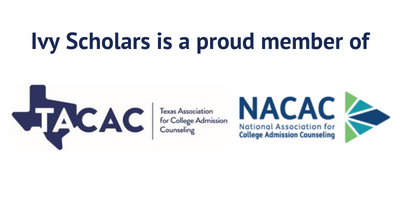In order to stand out to admissions officers, many high school students are turning to research projects; conducting and publishing original research. This is quite challenging, but entirely feasible for students to undertake, as we’ve covered before. One of the major challenges of doing and publishing research, however, are publication timelines, something many students are unfamiliar with.
After all, research only counts if people know you’ve done it, and thus publication in a peer reviewed journal is the best way to show off for colleges. The peer review process often takes some time however, leaving students worried that they won’t get results before applications are due. In this article, we’re going to go over publication timelines for popular high school journals, and how you can ensure colleges know about your research successes. Let’s jump right in!
Publication Timelines for High School Journals
Here are some popular high school journals, and the review timeline for each. We have ordered these alphabetically for your convenience.
| Journal | Review Timeline |
| American Journal of Industrial and Business Management | Four weeks; papers are all published online in open source, so there is no extended publication timeline |
| Columbia Junior Science Journal | 1-2 months; one publication annually, in October |
| The Concord Review | There are four publications annually; accepted submissions may be published in any of the next four (so up to a year hence) |
| Curieux | Up to a month for review, then 2-3 months for publication. You may pay extra for an expedited review |
| International Youth Neuroscience Association | Up to six months |
| The Journal of Emerging Investigators | 7-8 months on average |
| Journal of High School Science | 4-5 weeks at minimum; they publish four times annually |
| Journal of Research High School | 3-6 months on average |
| Journal of Student Research | One month on average for review, up to three months for publication |
| National High School Journal of Science | 1-3 months to review, two publications annually |
| Open Journal of Business Management | 4 weeks for peer review, then another 3 weeks for online publication |
| The Schola | Approximately 6 weeks; published four times annually |
| STEM Fellowship Journal | 4-5 months on average |
| Whitman Journal of Psychology | Variable, published online on a rolling basis |
| Young Science Journal | Up to two months, published once annually |
A few notes; first there is a distinction between how long it takes to review a paper, and how long it takes to publish it. Many journals publish every few months or just once a year; these may be reviewed but not published for some time after submission. Journals which publish continuously online will often publish immediately after a review is complete and a paper is accepted (though not always).
We also only include peer reviewed journals in this table; journals that don’t peer review are faster, but much less beneficial; we explain this in more depth in our article here.
When to Submit to Journals for Publication in Light of College Apps
The review timelines for different journals vary quite a bit, but they do have a few things in common. Most notably, they do all take a fair bit of time. This can often come as a surprise to high school students; even the largest projects and essays you turn in are generally graded in a week or so. This is not the case for research journals.
These journals are reviewing each submission carefully. The people doing these reviews are volunteers, but see this service as beneficial to the field as a whole, and take their responsibilities seriously. This is true whether you submit to high school or professional journals. This, therefore, takes a lot of time, as they review your methodology and check your results.
If you want to have your paper accepted before admissions deadlines are due, then you will want to submit during the summer before your senior year. This accounts for both the initial review, and the fact that many journals will send a paper back to submitters for corrections before accepting it.
Note that receiving corrections is not a personal attack, nor is it a sign of failure. Most papers that are published go through the process of receiving corrections and being edited prior to being accepted. This does, however, often extend the time between when a paper is submitted, and when it is finally published.
We advise submitting anything you wish to include on your college apps three to six months in advance for this reason, just to give the slow process time to wend its way through to a conclusion. If you are looking for a more in-depth overview of the publication process, see our article here.
What if Publication Timelines Slip?
So, that’s the best case scenario, you get everything in early, it’s all grand, it gets published, and admissions officers see how smart and cool you are. What if, for one reason or another, this goes wrong somehow. How can you then talk about your research and accomplishments in a way that will stand out to admissions officers?
Describe Where You Are
If your paper has been accepted for publication, though has not yet been published, that is nearly as good, and can and should be bragged about. If necessary, you can update colleges when it actually is published, but this is rarely necessary. If your paper has only been submitted, and review is ongoing, then you can mention this as well.
A paper under review is less impressive; the work is still exceptional for a high school student, true, but it lacks the external validation of a paper accepted for publication. In these situations, you should always attempt to update admissions officers if your paper is accepted for publication after your application is submitted. That said, there is still something notable in having created a paper at all.
Change Publication Targets
Different journals have different publication timelines; some are much faster than others. In some cases, based on paper topic, you may not have much flexibility in where you submit; other times, however, you can choose a journal with faster turnaround times to try and get a result before applications are due.
You may also submit a work to a conference rather than a journal. Conferences have a much faster turnaround time; and while it may not occur before a college application is due, having a paper accepted for presentation at a conference is still a notable achievement, and well-regarded by admissions officers.
Avoid Pre-Prints and Non Peer-Reviewed Journals
There are ways to publish much faster by avoiding the peer review process entirely, publishing in either pre-prints or non peer-reviewed journals. We generally advise students to avoid both these options. While they are fast and can appear flashy, they lack the substance and impact of peer-reviewed counterparts. Publishing in a non peer-reviewed journal may make admissions officers question the validity and quality of the research you have done.
Final Thoughts
You certainly don’t need to publish research in high school to get into a top college, but as competition grows ever fiercer, it is an increasingly popular way to stand out from the crowd. This does come with many logistical challenges that can trip high school students up however, and which can make the process quite difficult.
We hope that this article has given you clear insight into how to publish research in a way that colleges will be able to see, and how much planning this takes. Of course, this is a lot to ask of high school students; if you are looking for help with your own research endeavors, then our research mentors can help. These are experienced PhDs and professors, with all the experience needed to help you with your research projects. Schedule a free consultation today to learn more; we’re always happy to hear from you.








